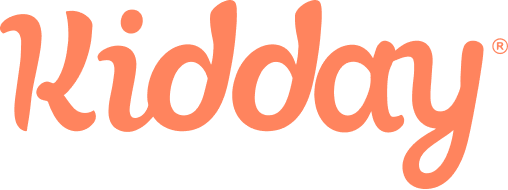In today’s rapidly evolving digital landscape, artificial intelligence (AI) has introduced a new frontier in the way we interact with images and media. Particularly, AI-generated photos present a new challenge for sharenting or digital parenting, transforming traditional concerns around privacy and safety into complex issues that navigate the blurry lines between virtual and real identities.
AI technologies, capable of creating highly realistic images, offer a double-edged sword. On one hand, they herald a future of creative expression and innovation. On the other, they pose significant risks when it comes to the online presence of the most vulnerable; our children. This article delves into the implications of AI-generated photos of children and the associated threats when these images find their way onto social media platforms.
The emergence of AI-generated photos
The technology behind AI-generated images has seen exponential growth, enabling the creation of photos that are currently nearly indistinguishable from real photos and the current speed of advancement in the field arises questions whether or not will anyone be able to distinguish a real image from a fake one. These advancements, while remarkable, have opened the door to misuse, especially concerning our children.
Instances of AI being used to alter, enhance, or generate children’s images without consent have started to surface, raising alarm bells for parents and guardians worldwide. The technology’s ability to manipulate photos can lead to a range of threats, from identity theft to unauthorised use in disturbing contexts.
It doesn’t stop at photos
While it has started with photos, AI-generated speech and video are already here. OpenAI mentions in their blog post that their new Voice Engine is able to create a synthetic voice of a person based on only 15 seconds of original material.
For videos, OpenAI lately published details of their text-to-video model called Sora. For now, it is text-to-video, but in the near future, it will be able to create videos with the faces of real people.
The responsibility of AI platforms
AI platforms, particularly those specializing in image generation and manipulation, have indeed made strides in incorporating safety measures. These can include content filters, user authentication processes, and algorithms designed to detect and block the creation or sharing of inappropriate content. Such measures are essential in creating a safer digital environment, especially for content related to children. However, open models are always just months away from the models released by big companies, such as OpenAI.
The challenge of open models
Despite these efforts, a significant challenge remains: the availability of open-source AI models. These models can be downloaded by anyone from platforms such as Huggingface and run on your own computer at home, effectively sidestepping the safety measures put in place by AI platforms. When the filters are removed, the imagination of the person who inputs the prompt is the limit to what can come out of them.
Risks associated with AI-generated images of children
Privacy concerns
The primary concern with AI-generated images of children is privacy. Photos shared online can be harvested and manipulated, leading to the creation of content that could haunt a child for years to come. This breach of privacy not only compromises a child’s current state of well-being but can also impact their future.
Identity theft and elaborate scams
The capability to generate realistic images with artificial intelligence opens avenues for malicious use, such as identity theft. Fake profiles can be created, and children’s personas can be used in ways that are both harmful and deceitful.
Imagine a situation where someone has harvested photos of your child from social media and has generated a new image portraying your child with AI. They have contacted you with a text message containing the photo of your child in a suspicious setting urgently demanding for money. How would you survive from such situation?
The role of social media
Viral content
One of the fundamental aspects of social media is its ability to make any post go viral, reaching audiences far beyond the original scope. While often sought after for promotional purposes, virality can be a nightmare for parents sharing photos of their children. An image meant for family and friends can quickly escape its intended audience, falling into the hands of those with malicious intent. This aspect is particularly concerning with AI-generated images, which can be modified and shared without consent, stripping away any control the original poster might have had.
Protective measures for parents
Protecting children in the digital realm is a multifaceted endeavour that demands vigilance, education, and the use of available tools to mitigate potential risks. As AI technologies evolve and the sharing of content becomes more seamless, parents must adopt a proactive stance to ensure their children’s digital experiences remain positive and safe.
Understanding the digital footprint
The first step in protecting children online is understanding the concept of a digital footprint. Every photo shared, post liked, and comment made contributes to a child’s digital presence, which can have long-lasting implications. Parents should educate themselves and their children about the permanence of online actions and the importance of curating a positive digital footprint from an early age.
Educating children about online safety
Education is a powerful tool in the quest for digital safety. Conversations about the potential risks of sharing personal information, the concept of privacy, and the importance of coming to an adult if something online feels uncomfortable are essential. These discussions should be age-appropriate and ongoing, adapting as children grow and their online engagement evolves.
Choosing the right platform for your content
Choosing the right platform for posting photos of your children is crucial for ensuring their privacy and safety. Kidday offers a secure, closed environment for private photo sharing, designed specifically with family privacy in mind. The platform allows parents to share updates and images within a controlled group, mitigating the risks associated with broader social media networks. By utilising Kidday, families can enjoy the benefits of digital sharing while safeguarding their children’s digital footprints.
How about legislation?
The rapid advancement of AI technology has outpaced legislative efforts globally, leading to a significant gap in regulations that address the nuanced challenges posed by AI. While experts across various fields, including the AI field have been vocal about the urgent need for comprehensive AI legislation to protect individuals and ensure ethical use. For example Sam Altman, who is the CEO of OpenAI has agreed on the need of regulation in front of the US Senate.
The EU has made notable progress with the proposal of the AI Act, aiming to establish a framework for AI governance within its member states, but the need for similar, robust legislation worldwide remains a critical concern for many.
 English
English Suomi
Suomi
